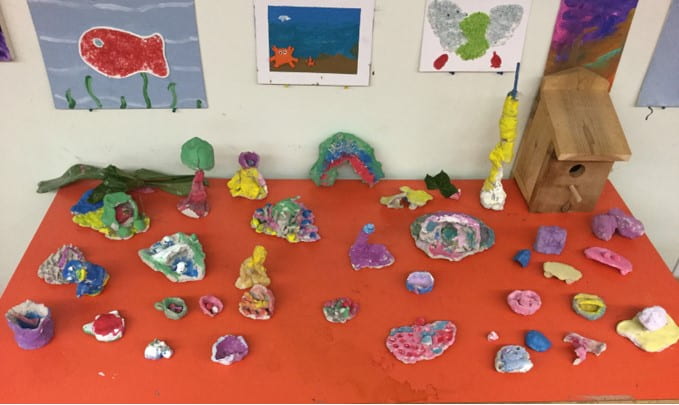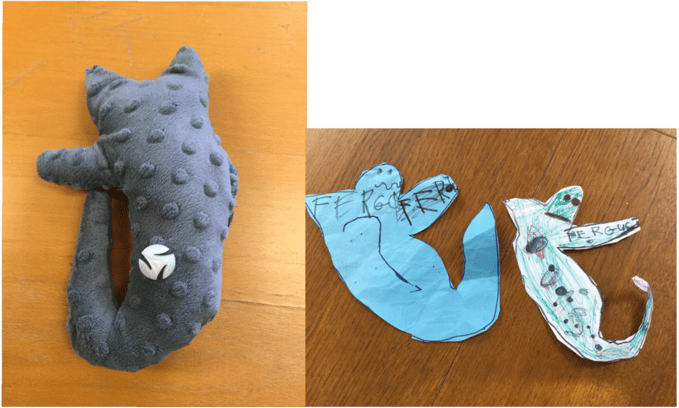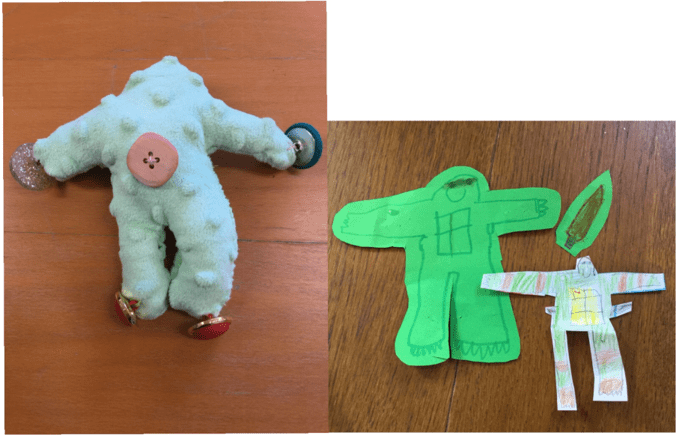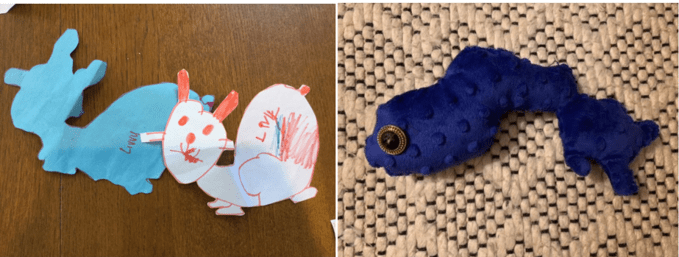 By Cecily Heras (MEd student & CIRCE Academic Council member)
By Cecily Heras (MEd student & CIRCE Academic Council member)
It has been a good first two terms so far with LiD in the K-3 classroom. To varying degrees, each of the students has engaged in their topic. They have each asked good questions and have openly shared their growing expertise with myself and others. As this is my first research go-to, most of the time, students are gaining their knowledge through interaction with books or video sources supported as needed by adults. In order to continue provoking the students to think about their topics from different perspectives, during the Spring of 2021, I asked them to explore LiD through the arts.
Students were initially interested in creating concrete representations out of clay so I asked them to think about creating their topics, or something related to their topics. I then brought out the tools and the bag of clay, and after some basic instruction in pinching, rolling, and sculpting techniques, the children went about creating freely. As we all know, though this is a relatively easy process overall, clay work is messy and involved. Many students had clay on their hands and arms, and even in their hair by the end of the first session, so leaving adequate cleaning time was necessary, especially as I wanted the students to help clear our surfaces. After just 2-3 sessions, each student had not only created a work of art but had shown their knowledge and understanding of their LiD topics through what most of them had initially considered an unlikely medium.
From this initial success, students wanted to create more with their hands. After discussing some options, most the students were highly interested in making personal stuffies. The idea was to make out of fabric something related in some way to their topic. They would sew their stuffy by hand, which could be representational or abstract, small or big, detailed or not. Yes, there was one student who had absolutely no interest in handicraft, and so after the initial steps continued their exploration through other means. But with two boxes full of soft material, the responsibility of using real needles, and the lure of perhaps using a real sewing machine, the project was enthusiastically enjoyed.
Now, the type of embodied experience that has the potential to make children bleed always has to be approached with caution. Very few students had any previous experience with a sewing needle, and so needed basic safety and skills sessions in advance of the actual creation of their stuffy. Two sessions were spent on the carpet quietly learning needle etiquette and threading, basic straight stitches, cutting, and, when ready, affixing buttons and applique. One might think that pinning a piece of thin paper onto a piece of soft fabric with a sharp pin would be simple enough that almost all 5-8-year-old to do without instruction. Be assured however, that for one who has never needed to perform this action, there is both skill and understanding that must first be gained.
Once these basic classes were completed, the design process could begin. The first step was, of course, to create a sketch of the stuffy. After some instruction and caution about size (too small, and it will be difficult to sew), and intricate curves (too many are difficult to cut), each student drew their vision. Most of the students chose to create abstracts, though a few created very detailed designs. With sketches complete, most in full colour, students translated their images into paper patterns. From there, students were able to choose their fabric from an assortment of both large and small scraps of fabric we have on hand. The fabric selection process was by far one of the most important to the students; some wanted their stuffy to be soft for bedtime, while others considered colour essential. Many took extreme care in their selection, and once chosen, students pinned and then cut out their patterns from the fabric. Though fabric scissors are made to be sharp and so able to cut fabric more easily, many of the students with smaller hands did need assistance for this.
The hand stitching sessions were some of the most enjoyable of this whole process. We were often seated outside on the many beautiful spring days we enjoyed, sewing while we chatted casually and/or listened to music. Students had great fun affixing specially chosen buttons or custom applique to their creations, and it was this activity, more than any other, which gave the children a firm appreciation of just how much work sewing can be. Those with the most detailed designs eventually conceded that just a few embellishments were perfectly good. Once the stuffies had been decorated, students who were interested were given a chance to use the sewing machine. Only a few students felt ready to try, but those who did honed their skills by sewing the class’ stuffies together inside out to hide the seam to get them ready for stuffing and finishing. The whole process from start to finish lasted about 7 sessions, which is a considerable time commitment. The results, however are worth the time if you have it.
Now that the children have spent a great deal of time expressing their LiD topics through art, they are eager to get back to their book research, a nice segue into their third term celebration of learning. During third term, students will focus not only on deepening knowledge about their topics but various ways of expressing that knowledge. While students regularly share their topics with one another during our weekly LiD sessions by offering guiding questions, solutions, or suggestions when asked, they have not yet done so in a formal way. As this term will culminate in student presentations, new skills will need to be taught to underpin the LiD work. I anticipate that a great deal of time will be spent preparing to share their knowledge with the class as many learners are young and still gaining confidence with these skills. With such enthusiasm so far however, and short videos of other student LiD presentations, I am certain that the students’ work will be a pleasure to guide and watch.
Interested in Reading More?
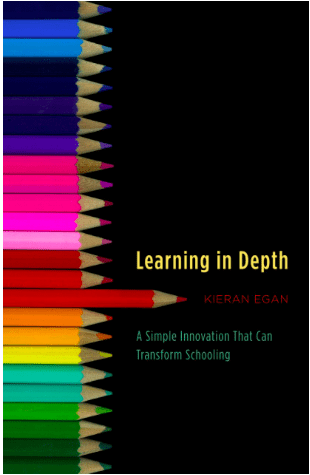 Click here to check out the other posts on imaginED about Learning in Depth.
Click here to check out the other posts on imaginED about Learning in Depth.
Click the links below to read the other posts Cecily has written for imaginED:

